Filling the Gap: AMOLED and LCD from 2010 to 2012
by Joshua Ho on July 26, 2014 6:00 AM ESTHTC Desire HD
The next device we’ll look at is the Desire HD. LCD has always been more mature than AMOLED, so it would make sense for the improvement over the past four years to be much less. However, it seems that the Desire HD’s display is a far cry from today’s smartphone displays. While not as grating as the effects of PenTile on the Galaxy S, the low resolution is still quite obvious on this display. Careful examination shows quite a bit of aliasing, but from a distance it isn’t too obvious. The other issue here is the viewing angle stability. Much like the Xperia Z1s, the display rapidly washes out towards homogenous white with increasingly extreme viewing angles. This is likely due to the same *VA display technology used in both, although that’s about where the similarities end. There’s also no display lamination so reflectance is quite high, subjectively speaking.
As seen by the brightness graph, the Desire HD’s display is incredibly dim. I suspect this was done to try and keep battery life in check as the Desire HD was rather notorious for poor battery life. Contrast is also rather dismal, but I suspect this is partially due to the lack of dynamic contrast or similar mechanisms to artificially boost contrast values. The low brightness may also be due to the sheer age of the device.
In grayscale, the Desire HD is also rather poor. Although things aren’t quite as bad as the Galaxy S, they aren’t very good either. I suspect that the excessive green/blue in these devices was a method of boosting peak brightness, although by the Sensation it seems that HTC had clamped down white point to some extent.
In the saturation sweep, the Desire HD is eerily reminiscent of the One (M8), although this is mostly due to the rather extreme blues produced. The display exceeds sRGB by a certain amount in every sweep, and while the error here is relatively low, such error tends to magnify a great deal in the ColorChecker test.
It turns out that this is exactly what happens. Relatively acceptable error does become unacceptable in the ColorChecker. In reality this display is likely to be inaccurate for any color-sensitive use case, and color reproduction is unlikely to be close to the original image. It’s definitely better than the Galaxy S for color accuracy though.


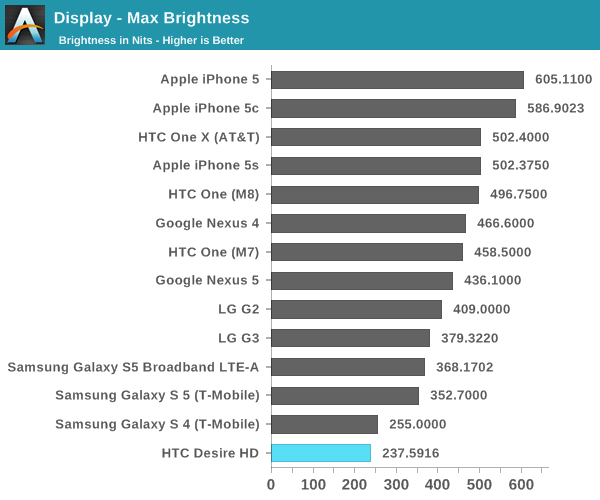

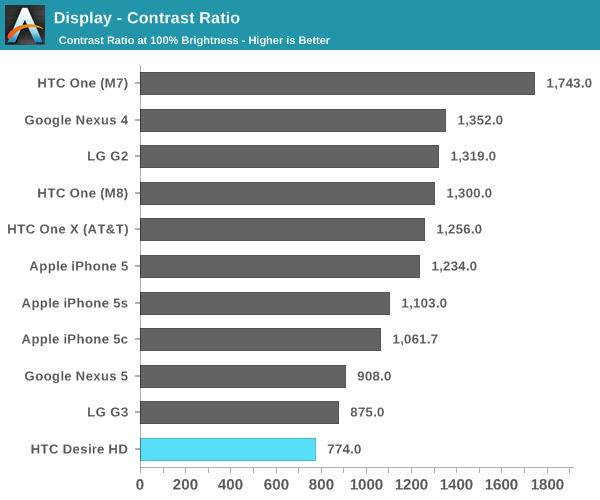
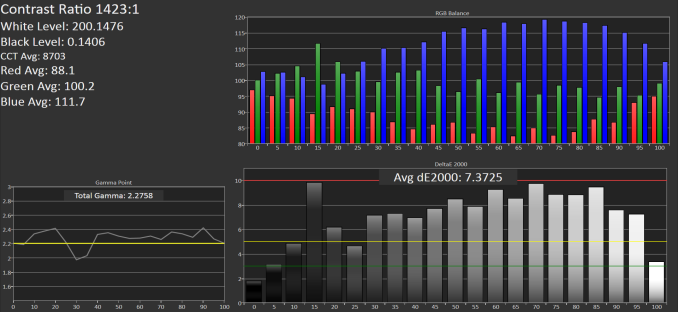
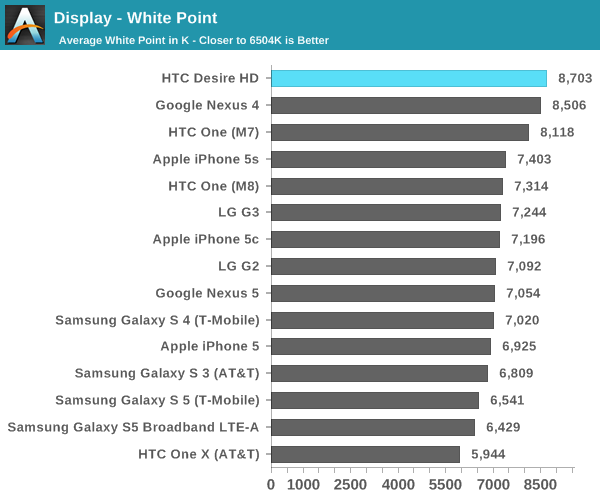
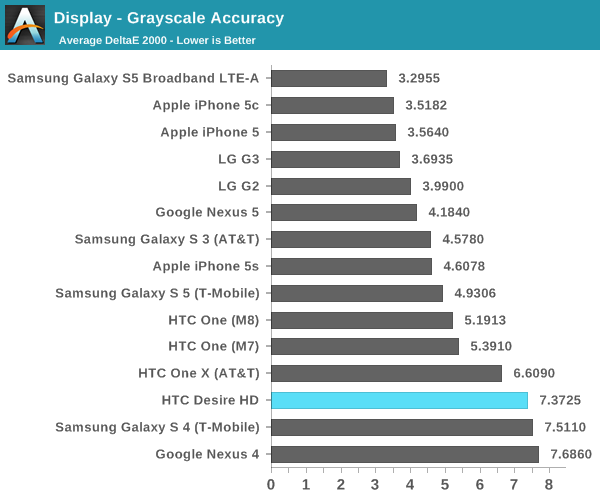
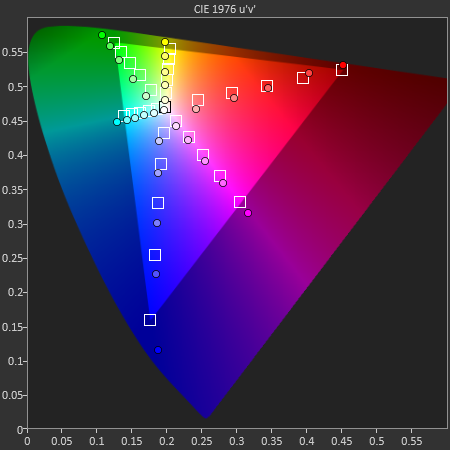
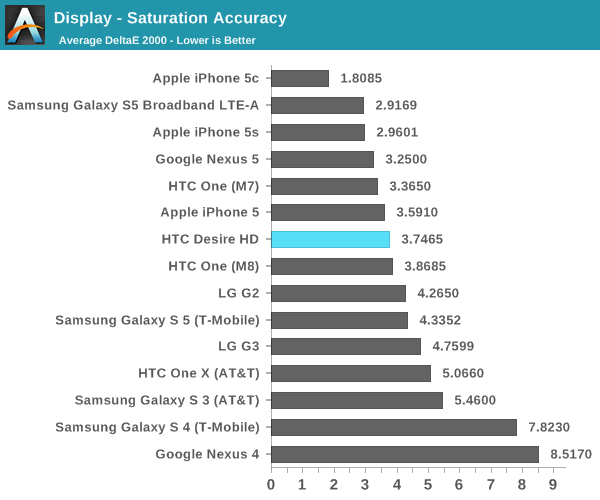

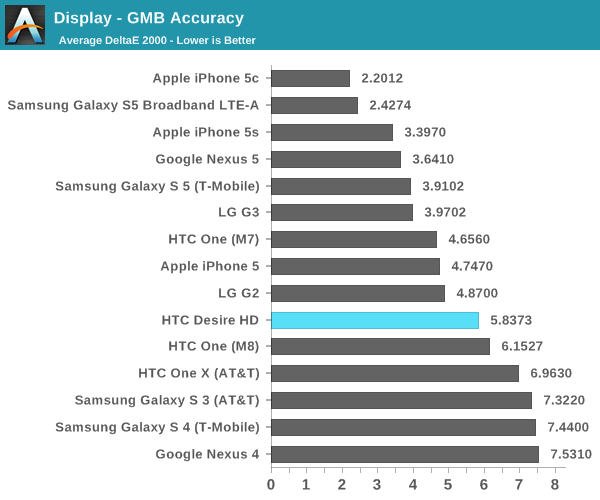








72 Comments
View All Comments
name99 - Saturday, July 26, 2014 - link
This is a silly statement. As I said, the 4 feels substantially slower than the 5. WiFi is not nearly as fast as I'd like. Hell, the 4 doesn't even have LTE. The fingerprint recognition in the 5S works very well for me. I suspect there is a grand future ahead of the sensor core that is the M7 chip.etc etc etc
Streamlined - Saturday, July 26, 2014 - link
He meant the display was pretty much all sorted out on the iphone 4.name99 - Saturday, July 26, 2014 - link
Fair enough. But I'm not sure it's correct.Contrast is still a problem for all iOS devices. Obviously OLED solves that, but (so far) at the expense of greater power usage (unless you try very hard to use black everywhere) and, apparently, the screen degrading over time.
Beyond that there are the invisible improvements that are possible (most notably the power saving business where you only communicate with the screen when the image changes, not routinely every 60th of a second).
Also I expect that, at SOME point, someone will add in a fourth phosphor so as to give us a wider gamut than what we have today.
But yeah, with retina we solved the problems that were so obvious they were visible to anyone with even slight technical background. The remaining improvements are all much more subtle. (Unless, of course, someone comes up with a 3D screen that's both actually useful and doesn't suck to look at!)
mkozakewich - Sunday, July 27, 2014 - link
The iPhone 4's screen was still greyish. The iPhone 4S looks mostly good, but was a fairly standard display. It was the iPhone 5 that gave us nearly the full sRGB gamut, and the 5S just improved on that.tipoo - Monday, July 28, 2014 - link
While that's true in retrospect, the 4 was possibly comparably the furthest ahead of the competition when it launched.akdj - Friday, August 8, 2014 - link
Yep. The '4' was a game changer. And it's only gotten better. Along with the iPad 3-->4 with the HiDPI display and the guts to run it. The iPhone 4 was a grand slam. I love my 5s as my personal and Note3 as my business line. Doesn't matter which I'm looking at. SP3, rMBP an iPhone 5s or the latest Super AMOLED. Today's HiDPI movement ...including in the living room with 4k, IMHO it's a significantly better 'leap' forward than the CES 12-13 3D craze. Good riddancemkozakewich - Sunday, July 27, 2014 - link
There have been reports on those screens. I'm not sure about iPhone 3G, but 3GS had a screen with fairly good viewing angles but had a horrible washed-out look. iPhone 4 had better colour and contrast, but was still greyish 4S was pretty good, sort of par for the course at the time, when compared to other screens. It was the iPhone 5 that really brought the "Full sRGB coverage!" and the 5s only improved on that a little. Like, 100% coverage instead of 98%.Fujikoma - Saturday, July 26, 2014 - link
It would have been interesting to see how displays, that were tested during 2010-2012, would compare to the same tests being run on them after 2-4 years of use. To see how time affects brightness and such. I would think that there would be a usage metering device to measure against, to compare multiple units of the more popular of phones.jabber - Saturday, July 26, 2014 - link
Yeah the Nexus 4 screen is pretty washed out at times but I do prefer it to the overblown Samsung types. I see folks coming up with screen profiles for their rooted Nexus 4's that make the icons and UI look great but then you look at a picture of a human face and they look like they have severe radiation burns.That's the acid test really for any profile...flesh tones.I don't know why contrast/saturation etc. has to be locked out of a standard phone setup. Why can't it be access without having to root it?
mkozakewich - Sunday, July 27, 2014 - link
You can put it into movie mode, and that should change it to an sRGB standard across the whole phone. It all depends on taste.